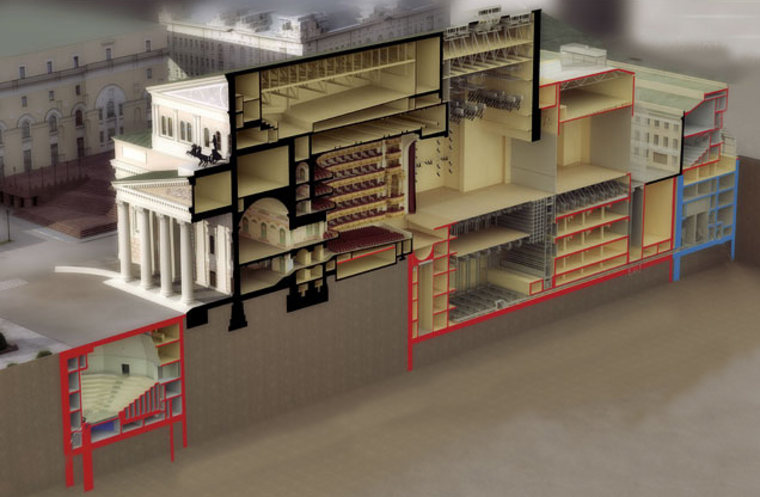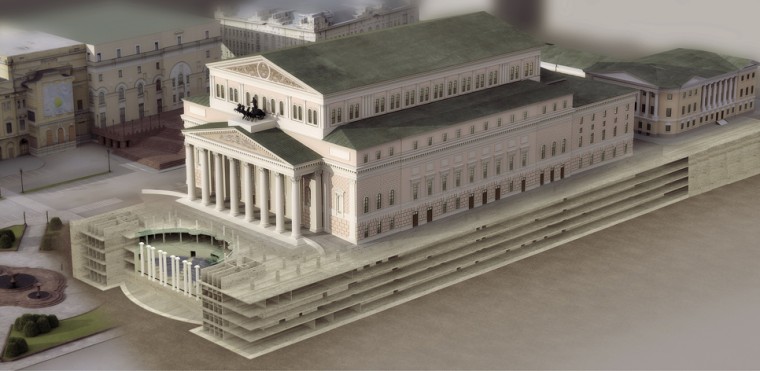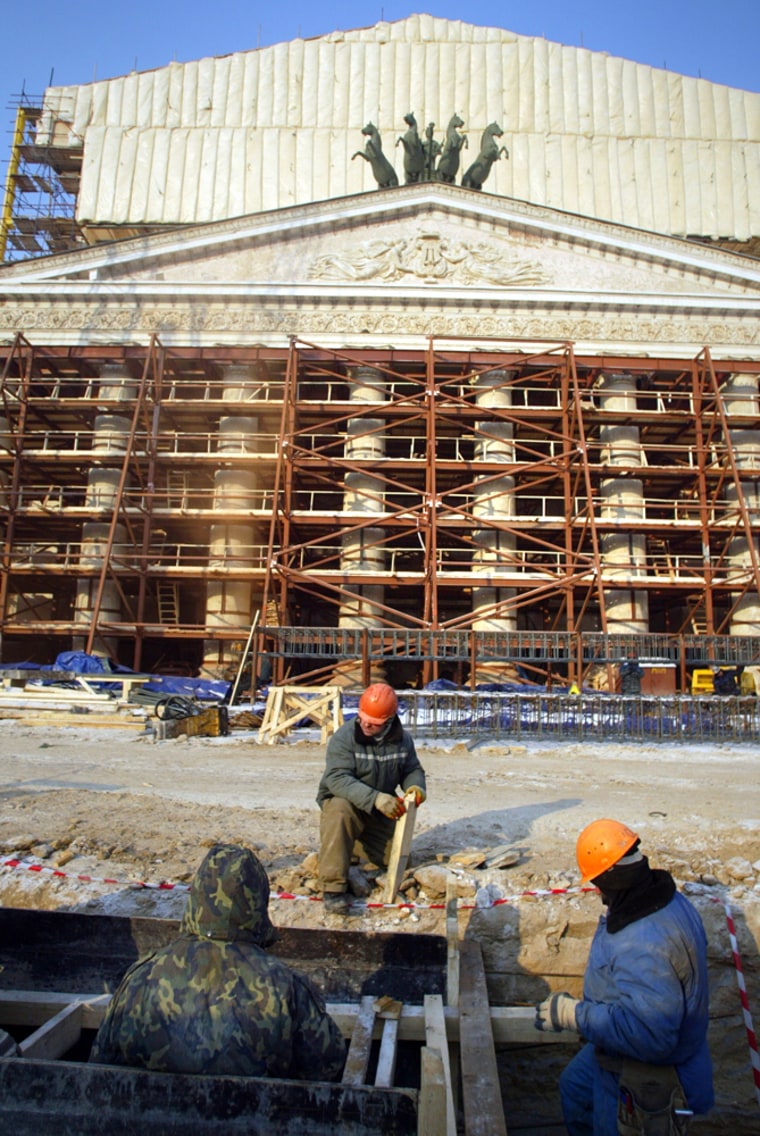MOSCOW — The Bolshoi Theater. The name conjures up visions of ballet and opera performed at the arts' highest levels.
What has not been at the highest level, though, is the theater itself.
For many years the location of some of the world's finest and most inventive productions, the imposing, lavishly ornate building in the heart of Moscow has lagged behind the technical sophistication of other major venues, such as the Metropolitan Opera in New York and the London's Royal Opera House, known as Covent Garden.
Most of its equipment looks as though it should be in a 19th century museum exhibition, rather than the mechanisms equipped to operate a huge theatre. The lack of technical sophistication has impeded other world-renowned houses from staging their computer-operated productions Moscow.
Now, a $500 million overhaul of the music giant — which has been around for more than two centuries and has bravely weathered fires, floods, wars and revolutions — is set to bring it into the 21st century.
Structurally beautiful, but technically behind
Having now undergone seven months of major construction, the theater recently raised the curtain on its restoration to a group of journalists in Moscow.
"The gist of the overhaul," said Anatoly Iksanov, the theatre's director, "is to make this beautiful building operate as the most modern mechanism."
"It's an endeavor of cosmic proportions," added Azariy Lapidus, the president of S.U.I. Holding, the company carrying out the restoration. "No one has so far undertaken to reconstruct such a historic monument to make it both a state-of-the-art venue and preserve its original shape.”
Cacophony of jackhammers
Inside, the auditorium that witnessed performances by giants such as Richard Wagner, Rudolf Nureyev and Luciano Pavarotti has been transformed into a forest of scaffolding.
The theater’s stage, once graced by the greatest ballet dancers and opera singers, is now reduced to a big ten-story-high gaping hole. The fine tunes of classical music are now replaced by a cacophony of jackhammers and power drills.

The reconstruction aims to preserve many of the centuries-old wooden beams, partitions and opera boxes, which hold the secret of the theater’s magnificent acoustics, crucial to any opera house.
"Wood is absolutely crucial for our theater," said Yelena Stepanova, director of the historic and artistic restoration team. "Wood creates perfect acoustics and we want to recreate the wooden floor in the stalls [orchestra seats].”
Stephanova explained how restoring the old wood floors would make a tremendous improvement over the current concrete base. “Once the wooden floor is in place, the sound will float around the whole auditorium evenly and clearly,” she said.
Lapidus explained that about 80 percent of the wooden parts of the building are fit for further service. And in this vast reconstruction process, even the original bricks are being restored.
"The bricks have been gradually crumbling since a vast blaze that engulfed the theater a hundred years ago," said Lapidus. "We are now injecting a special substance into the walls to strengthen them and prevent from falling apart."
Ready for two more centuries
The refurbishment will give the stage a myriad of new technical capabilities.

"The lights will be able to rotate in all directions, not only up and down, and we will be able to swiftly change the set on stage, which so far has not been the case,” said Iksanov.
The reconstruction also will create additional space for five underground levels that will accommodate boutiques and restaurants, revenue streams that are vital to modern art institutions.
"We aim to make the theater capable of functioning for another two centuries after the overhaul is completed in March 2008," said Iksanov.
